As white, fluffy snow coats America’s majestic Rocky Mountains and temperatures drop to below freezing, many snow-obsessed vacationers will head for the ski slopes. Some of them, unknowingly, may even venture onto the same terrain where World War II soldiers and spies learned to fight on skis, and later where Tibetan Freedom Fighters were secretly trained by the CIA.
Tucked away in a high mountain valley in Colorado, between several popular ski resorts, is Camp Hale: the nation’s newest National Monument. Camp Hale was designated as a tribute to some very special WWII heroes who helped create the very ski industry that thrives today throughout the Rocky Mountain region.
It’s also home to one of America’s most chilly spy sites.
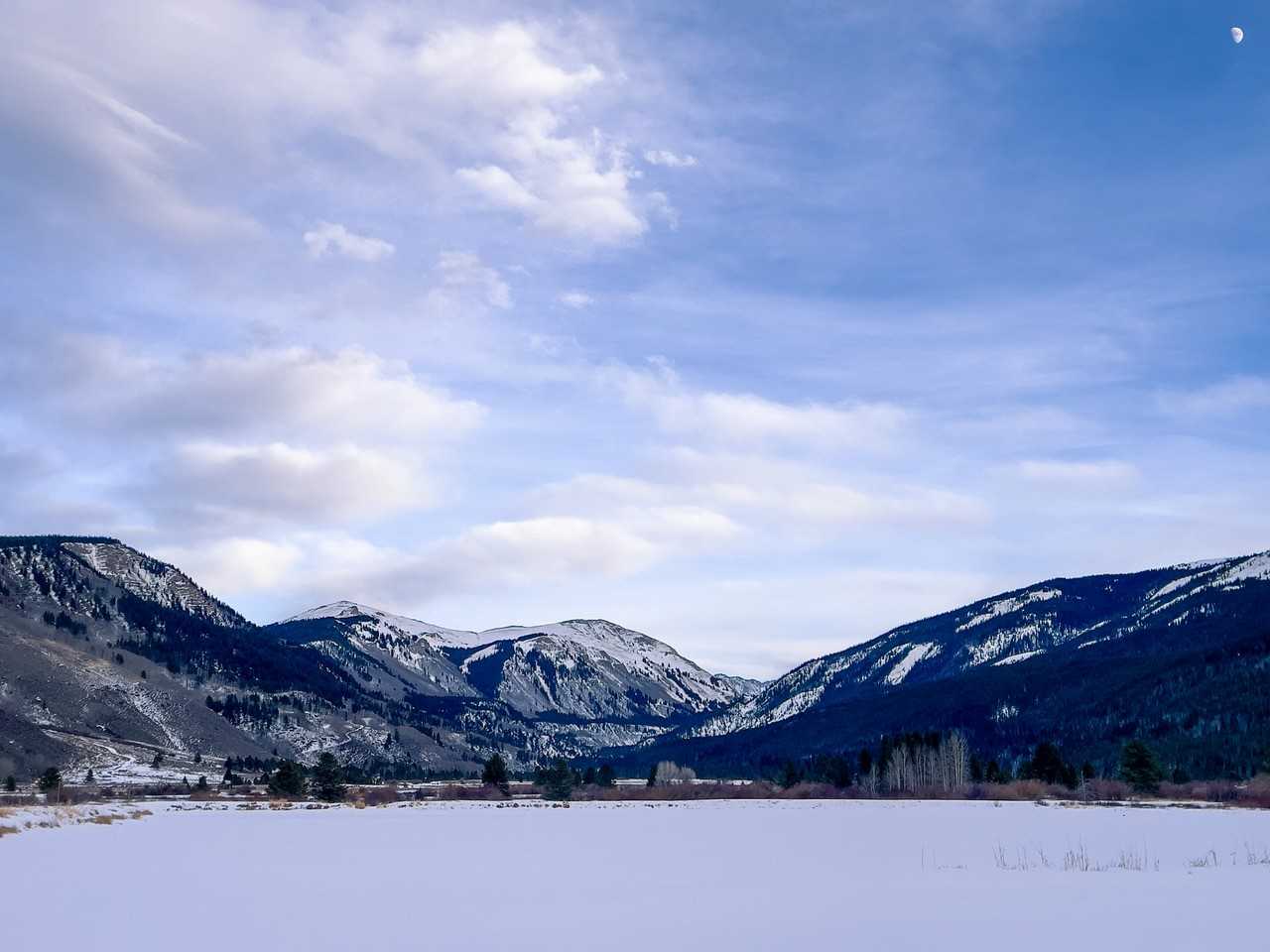
Camp Hale, Colorado
Camp Hale: Where Elite Military Mountaineers Trained
In 1942, Camp Hale was chosen as a training base for a legendary U.S. military alpine team known as the 10th Mountain Division. Approximately 15,000 troops trained at Camp Hale for eventual combat in the Italian Alps: almost 1,000 of those troops died in battle and around 4,000 were wounded.
A thousand buildings had to be constructed to house the soldiers, who arrived by rail over Tennessee Pass. The soldiers came from a hodgepodge of backgrounds, from the world’s best climbers and skiers to kids just off the streets of New York or Chicago.
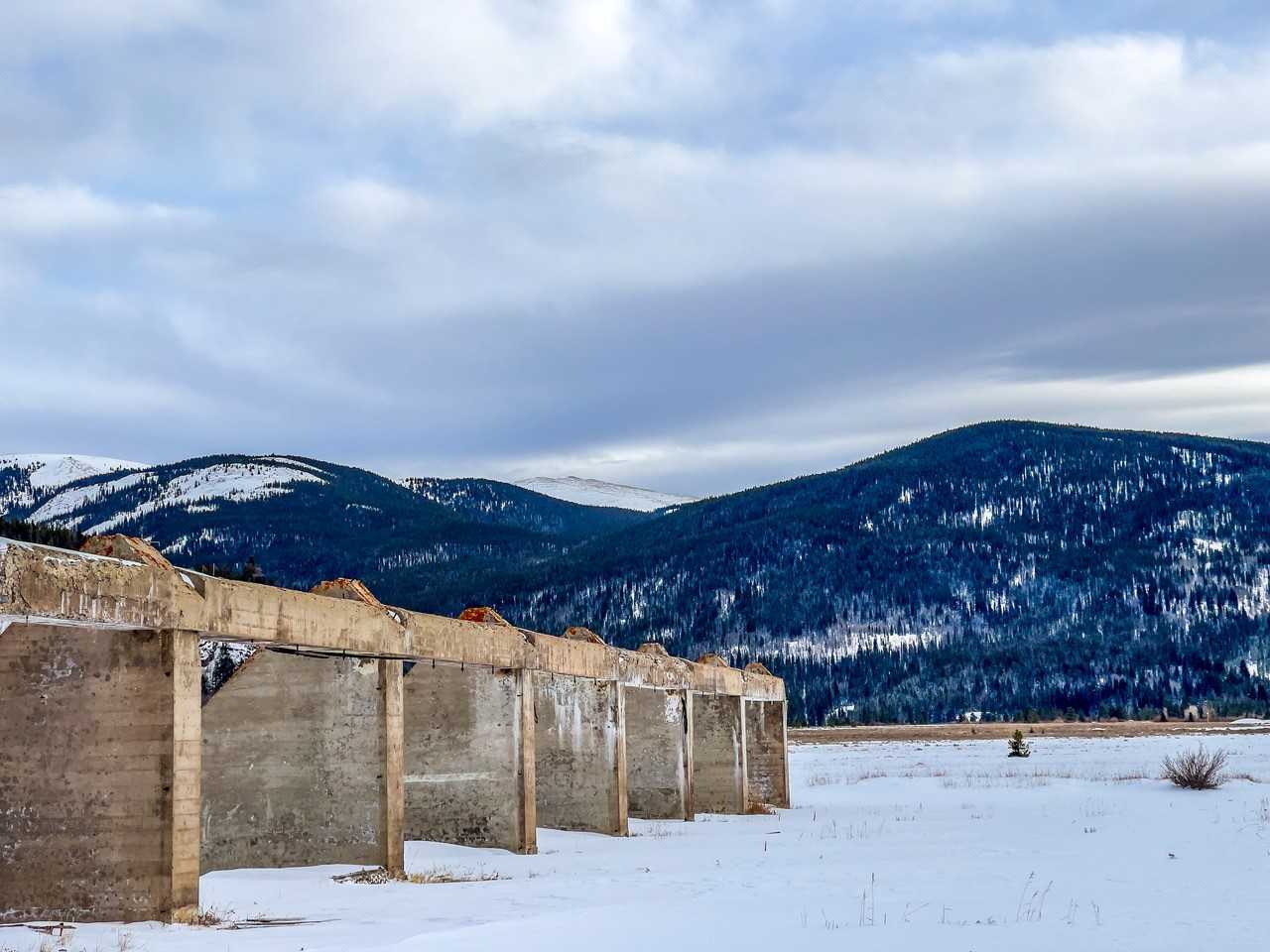
Today, only a few concrete skeletons remain of Camp Hale’s WWII buildings
Camp Hale was also home to 3,000 administrative, medical, and logistical staff, plus 5,000 mules and 200 dogs. Around 200 women were stationed at Camp Hale from the Women’s Army Corps, working alongside the men in non-combat related roles.
“Camp Hale is located in America’s Southern Rocky Mountains. The Southern Rockies extend from northern New Mexico across Colorado and into southern Wyoming. In geologic time, these mountains are relatively young. Formed several million years ago by a process of uplifting and faulting, the base of the Southern Rockies is over 5,000 feet above sea level. From their mile high base, the Southern Rockies rise abruptly to elevations that exceed 14,000 feet in some places.”
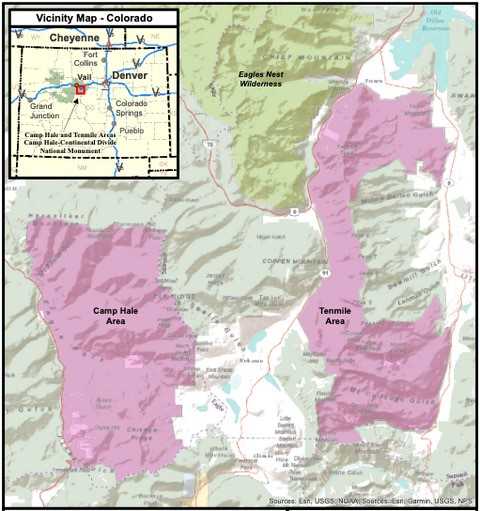
U.S. Forest Service
Did You Know...
Camp Hale was the only U.S. Army camp dedicated solely to training soldiers for winter mountain warfare. The main basecamp in the valley was 9,200 feet above sea level, with the surrounding mountains that makeup the Camp Hale region climbing to over 14,000 feet. The area’s extreme winter weather, altitude, rugged terrain, and closeness to a rail line made it the perfect location to simulate the conditions soldiers would face in the European Alps. It also made Camp Hale a great training ground for spies.
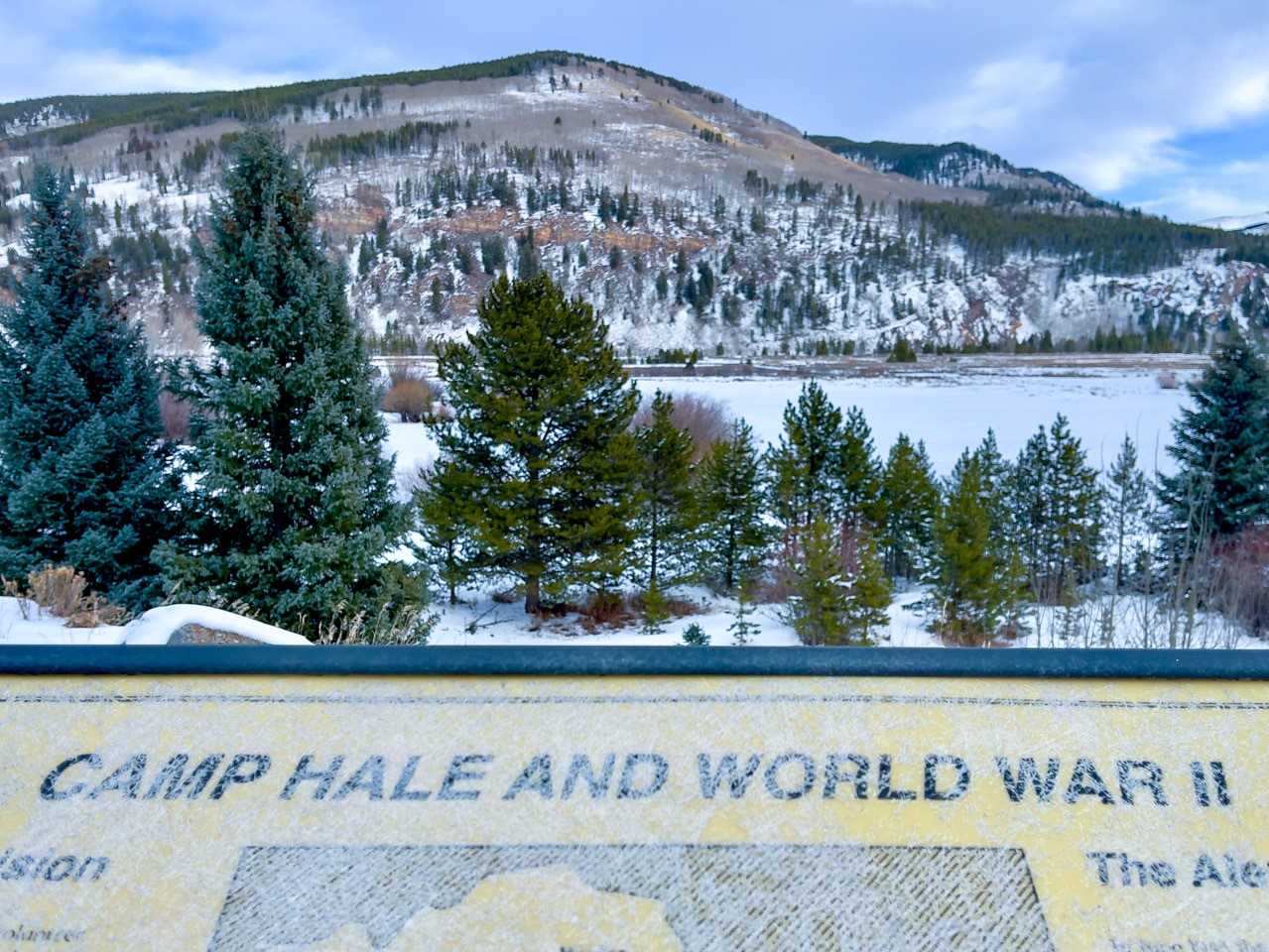
Informational sign overlooking where the Camp Hale basecamp once sat
The Office of Strategic Services (OSS), America’s first spy agency and CIA’s predecessor, arrived at Camp Hale in 1943 to recruit a few good spies on skis for secret missions in France, China, and Norway. One mission was even led by a soldier who would later become director of the CIA.
Spies on Skis: The Viking Battalion and Norwegian Operational Groups
In the summer of 1943, the OSS arrived at Camp Hale seeking volunteers for “extra hazardous duty.” They recruited around 100 Norwegian-speaking soldiers from the U.S. Army’s Viking Battalion (also known as the 99th Infantry Battalion) for clandestine missions throughout Europe.
The Viking Battalion was created in 1942, two years after the German invasion of Norway, and trained at Camp Hale alongside the 10th Mountain Division. The Battalion was comprised of approximately 1,000 Norwegians and Norwegian-speaking Americans. It landed in France two weeks after D-Day and fought across northern Europe, including at the famous Battle of the Bulge.
The OSS Norwegian recruits from Camp Hale became known as OSS Norwegian Operational Groups. They were transferred to the OSS training sites at the Congressional Country Club in Bethesda, Maryland, and at Catoctin Mountain, near the presidential retreat, Camp David. They underwent additional grueling training, including hand-to-hand combat, firearms, the art of sabotage, amphibious assaults, how to commandeer a train, and demolitions.
These OSS trainees were then deployed to France, where they parachuted into Nazi-occupied territory, as well as to Norway.
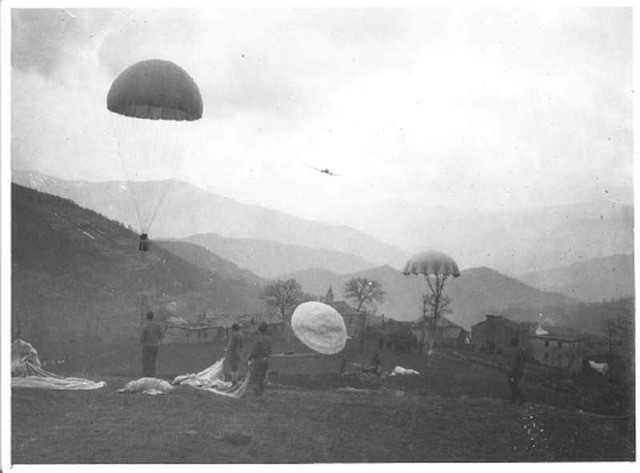
Jedburghs parachuting into the European theater during WWII
William Colby and Operation RYPE
William Colby, who would later become director of CIA, was a member of the elite OSS “Jedburghs” during WWII. He also led a Norwegian Operational Group team on a secret mission in Norway.
Parachuting behind enemy lines in the cover of night, OSS Jedburgh teams were special operations paratroopers sent into Nazi-occupied France, Belgium, and the Netherlands to coordinate airdrops of arms and supplies, guide local partisans on hit-and-run attacks and sabotage, and assist the advancing Allied armies to defeat the Third Reich.
While OSS groups like the Norwegians Operational Group were larger uniformed units akin to Army Rangers, the OSS Jedburghs were elite 3-man teams who could sneak into enemy territory blind to coordinate operations.
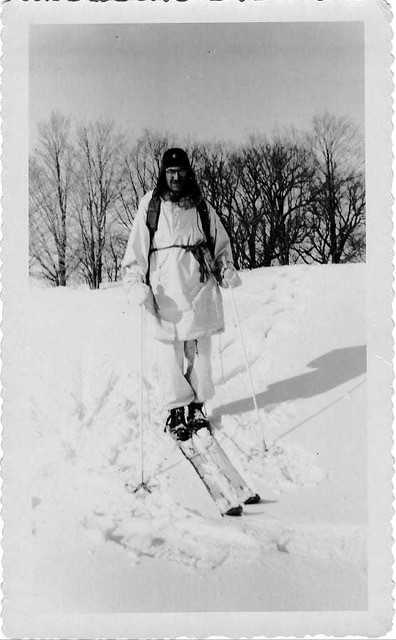
DCI William Colby on skies during Operation RYPE in WWII
In 1945, Colby led an OSS Norwegian Operational Group team into Norway (under the codename “Operation RYPE”) to sabotage German rail lines and prevent any German efforts to reinforce the homeland from the north. According to Colby, this team “was the first and only combined ski-parachute operation ever mounted by the U.S. Army” during WWII.
After the war many OSS officers, including Colby, joined OSS’s successor, the CIA. Colby became the director of CIA in September 1973 and served in that position until January 1976.
Post-WWII: Camp Hale
Once WWII ended, maintaining a base dedicated to the training of mountain troops was no longer practical—financially or logistically. The 10th Mountain Division was formally inactivated on October 15, 1945, while the OSS itself was dissolved on October 1, 1945. However, this was not the end for Camp Hale.
From 1951-1957, the U.S. Army’s Mountain and Cold Weather Command used Camp Hale for military mountaineering and rescue mission training. The start of the Cold War made it clear that future military conflicts might involve mountainous regions and, therefore, the need for U.S. mountain trained troops.
However, the U.S. military wasn’t the only one who recognized the need for elite alpine training. The newly-formed CIA had its sights (and sites) on Camp Hale too.
Dumra: The CIA’s “Military Monastery” at Camp Hale
From 1958 to 1964, the CIA covertly trained almost 300 Tibetan Freedom Fighters at Camp Hale. Once trained, the Tibetan fighters returned to their homeland—either sneaking across the border or parachuting into remote regions—and trained thousands of insurgents to conduct guerrilla operations against the Chinese forces invading Tibet. However, their mission to free their homeland was ultimately unsuccessful.
In 2010, an official memorial plaque was dedicated at Camp Hale to commemorate the brave Tibetan fighters and this little-known piece of intelligence history. Today, you can see the plaque as well as messages carved into the nearby aspen trees by surviving Tibetan fighters and their families. The plaque reads: “From 1958 to 1964, Camp Hale played an important role as a training site for Tibetan Freedom Fighters. Trained by the CIA, many of these brave men lost their lives in the struggle for freedom. ‘They were the best and the bravest of their generation, and we wept together when they were killed fighting alongside their countrymen.’ – Orphans of the Cold War, by John Kenneth Knaus. This plaque is dedicated to their memory.”
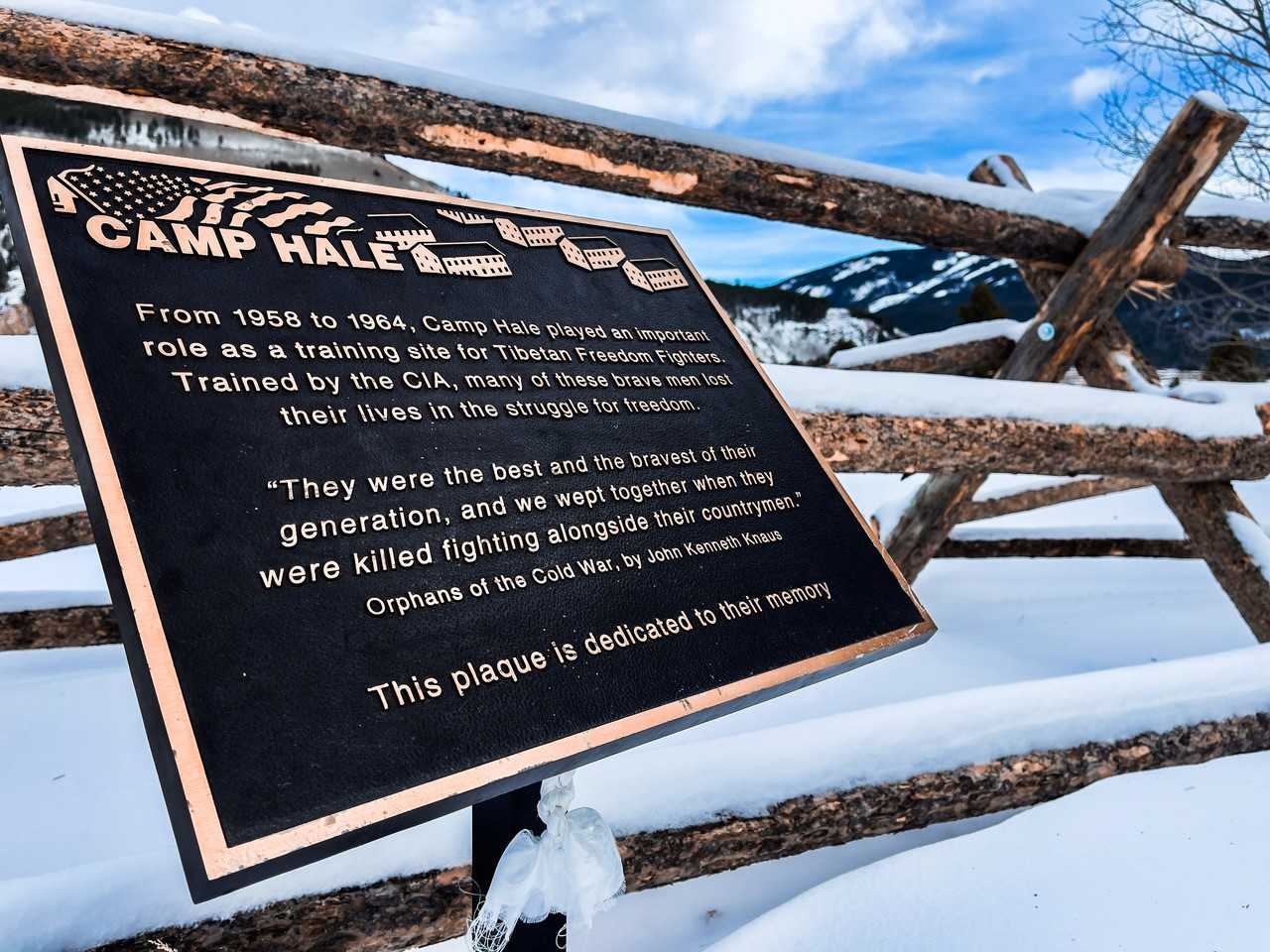
Memorial Plaque at Camp Hale
The CIA chose Camp Hale because its terrain and alpine conditions were similar to many of the physical features of eastern Tibet. The Tibetan trainees called Camp Hale “Dumra,” the Tibetan word for garden.
One of the CIA instructors at Camp Hale, John Kenneth Knaus, in his book “Orphans of the Cold War: America and the Tibetan Struggle for Survival,” gave a glimpse into what life was like at Camp Hale.
The trainees learned, among other things, how to gather intelligence, run underground networks, jump out of an airplane, create propaganda, conduct covert ops, fire a variety of weapons, read maps, and navigate by the stars (which most knew how to do better than their CIA instructors). The most time-consuming part of the program, according to Knaus, was teaching the Tibetans how to encrypt, send, and receive Morse code via radios from inside Tibet.
Because most of the CIA instructors did not speak Tibetan, young Tibetans who spoke English served as translators for both language and culture between the trainees and the instructors. The trainees were all given American nicknames, while the instructors, in true CIA-fashion, were known only by their first names.
Over the seven years that Camp Hale served as the secret CIA training base for the Tibetan Resistance, the Tibetan and American instructors lived as one large family. According to Knaus, “The unique harmony that existed in this military monastery, among the guerrilla trainees chanting mantras between and even during classes, the CIA instructors who had found a cause they could enthusiastically support, and the physical beautiful and isolated valley, prompted its inhabitants to regard it as a latter-day Shangri-la.”
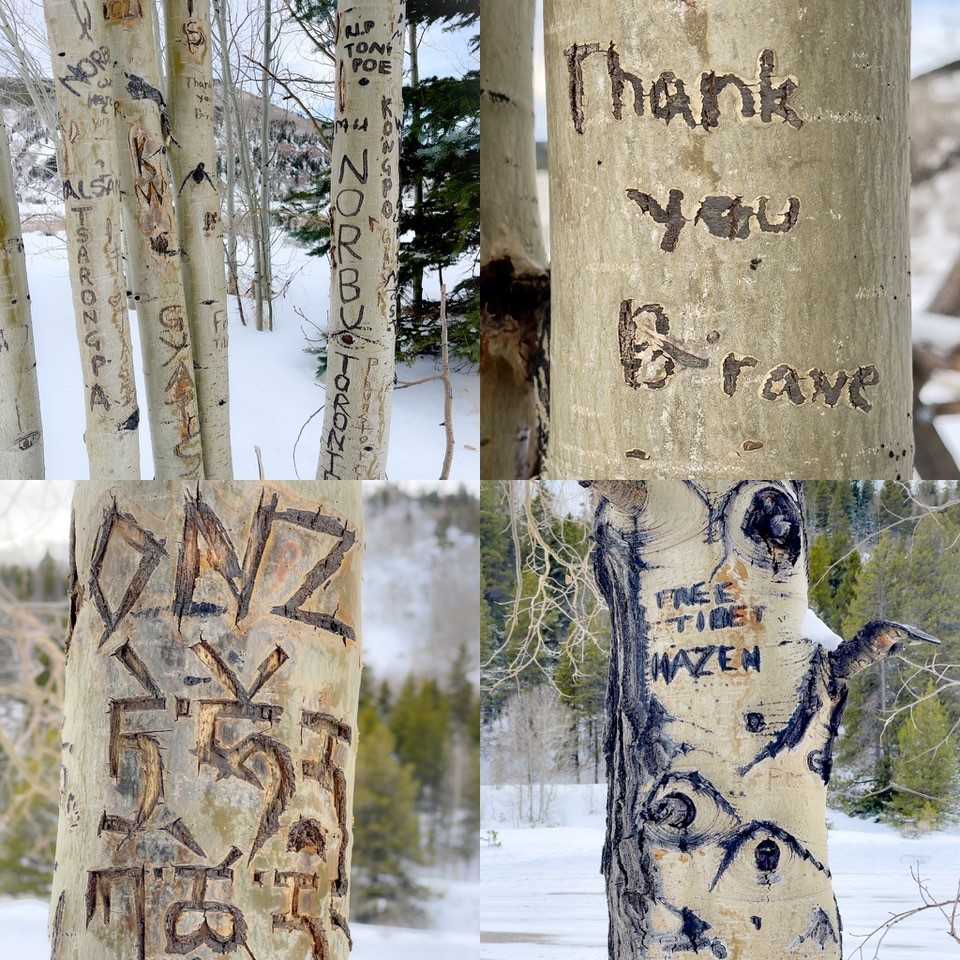
Aspen trees with carvings by Tibetan veterans and their families at Camp Hale
America’s Newest National Monument: Camp Hale
In 1965, a few years after CIA stopped training at Camp Hale, the U.S. Army closed the site for good. The land was transferred to the White River National Forest and became part of the U.S. National Forest Service.
On October 12, 2022, President Joe Biden declared Camp Hale a National Monument.
The 53,804 acre historic site—now officially known as the Camp Hale-Continental Divide National Monument—includes the basecamp area and the Tenmile Range, a stretch of jagged peaks and rugged landscape between Leadville, Frisco, and Breckenridge where the 10th Mountain Division also trained.
Camp Hale was the first National Monument designation of Biden’s presidency, marking the importance of this historic site. You can read his remarks here.
Colorado’s ski industry owes much of its legacy to the 10th Mountain Division veterans. After WWII, several of the ski troopers who trained at Camp Hale returned to Colorado and founded many of Colorado’s most famous ski resorts, including Vail, Aspen, and Arapahoe Basin. According to the U.S. Forest Service, virtually every major ski area across the United States had 10th veterans involved in some aspect of its operations.
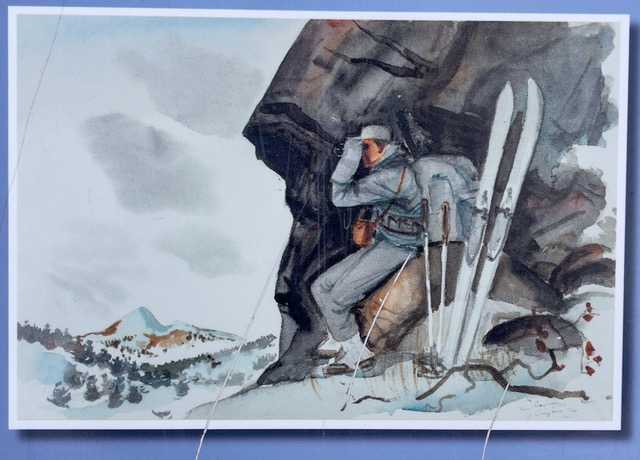
Did You Know...
Visiting Camp Hale Today
Now, 80 years later, you’d barely know that this picturesque valley surrounded by towering white-topped mountains is where elite WWII soldiers and spies used to train. Only a few structures remain from Camp Hale’s heyday. Instead, recreational climbers now scurry up the mountains that once held the footprints of soldiers, while campers and backcountry skiers explore the mountain slopes where spies used to roam.
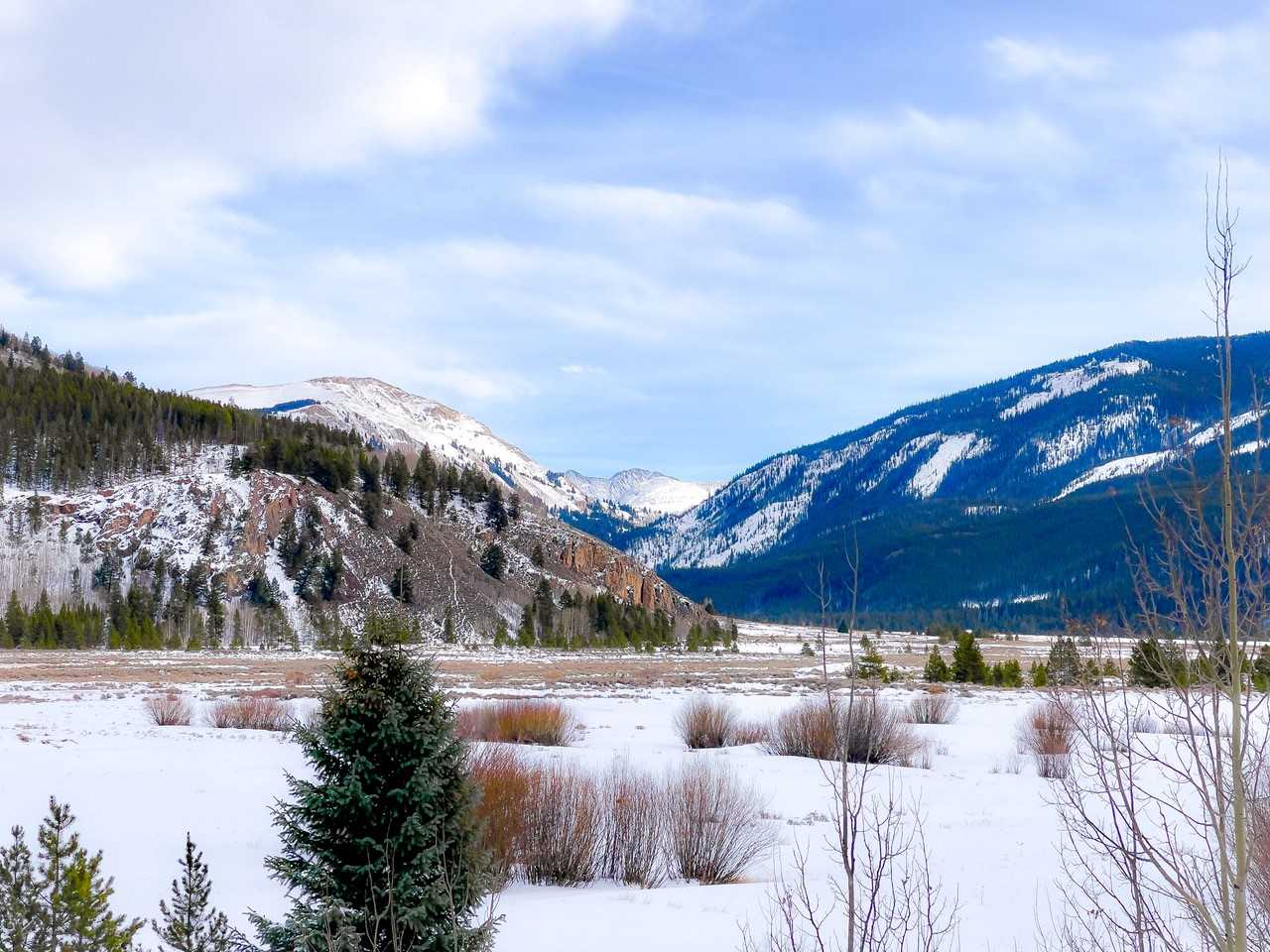
Camp Hale, Colorado
The mountains and valleys of Camp Hale are home to an abundance of plants and wildlife, including wildflowers, elk, coyotes, bobcats, the occasional moose, and many varieties of migratory songbirds. Recreationists now flock to the area for scenic hiking, camping, and rock climbing in the summer; and in winter backcountry skiing, snowmobiling, and snowshoeing.
According to the U.S. Forest Service, which manages Camp Hale and the surrounding area, the 567 mile-long Colorado Trail passes through the valley floor on its way from Denver to Durango. It’s known as one of the most scenic hikes through the Colorado Rockies. The area is also home to several cabins managed by the 10th Mountain Division Hut Association, which you can reserve and spend the night in!
The next time you plan a winter Rocky Mountain getaway, and you find yourself surrounded by those rugged snow-scattered peaks, think of the WWII heroes who lived and trained among these remote alpine mountains. You may even be traveling along the same routes once traversed by soldiers and spies.
